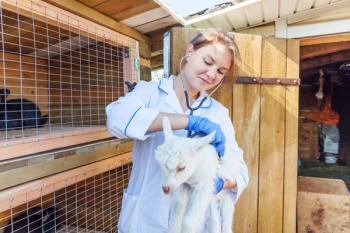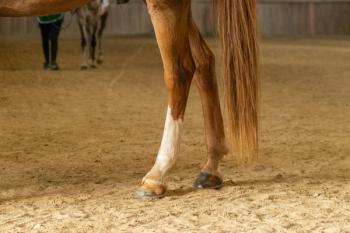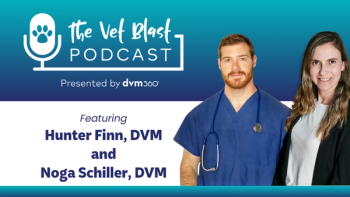
Racing industry launches equine injury database
A system that will provide the Thoroughbred racing industry with its first national database of racetrack injuries is off and running.
Lexington, Ky. — A system that will provide the Thoroughbred racing industry with its first national database of racetrack injuries is off and running.
And the veterinarian who pioneered the system believes it has the potential to reduce dramatically the number and severity of horse injuries over time.
The Jockey Club, which funded the development of the Equine Injury Database, announced its official launch in late July, after a one-year pilot program ended July 12.
During the trial year, some 3,000 injury reports were gathered from 60-plus tracks around the country and evaluated. The system underwent even more comprehensive testing recently in California.
These are its objectives, as defined by the Jockey Club:
» identify the frequency, types and outcome of racing injuries using a standardized format that will generate valid statistics
» identify markers for horses that are at increased risk for injury
» serve as a data source for research directed at improving safety and preventing injuries.
"The possibilities for what this can accomplish are limitless," Mary Scollay, DVM and equine medical director for the Kentucky Horse Racing Commission, tells DVM Newsmagazine.
"We've never had anything like this. You can't go back and recapture data from the past, but going forward we'll be able to identify trends, horses that are most at risk for injury and much more. I'm so pleased at how well this (pilot program) went and how the industry has embraced it," says Scollay, who is credited with developing the system that began testing in June 2007.
Regulatory veterinarians around the country played a key role in "giving assurances and convincing their leaders of the need for this and to participate," Scollay says. "They deserve credit. And Dr. Rick Arthur (California's equine medical director) was very helpful," she adds. "California has specific guidelines as to the information it requires to be recorded, and our system had to become compatible with theirs."
How does it work?
When an injury occurs, track veterinarians fill out standardized reports, providing such details as the type of track surface, length and configuration of the track, where on the track an injury occurred, type and body location of the injury, equipment that was involved and what type of track the horse is accustomed to during training — which might differ from the one where it was injured.
While all reports are maintained online, track veterinarians often make paper copies initially, if Internet access isn't nearby when an injury occurs. "Hard copies are kept for internal use, and then entered online, but veterinarians who need to do so are welcome to submit a hard copy," Scollay explains.
"Once a horse is identified as having been injured, we can continue tracking it, noting the interval from injury to eventual return and how it performs, or if it is withdrawn from racing."
Addressing misinformation
Scollay believes the system will address what she calls "certain assertions and beliefs" about the frequency and severity of racetrack injuries, especially in the press over the last couple of years, and particularly since the fatal breakdown of the filly Eight Belles at this year's Kentucky Derby.
"There have been all kinds of statements about increasing injuries, including assertions about the vulnerability of fillies vs. colts and the types of races they run. The fact is, the data just isn't there to support such statements. We're just beginning to collect it now."
The system will look at horses that run consistently without injury, too, examining their histories and variables such as their training regimen and type of track on which they normally run, in an effort to determine what keeps them injury-free.
Although Scollay is busy in her new role as Kentucky's equine medical director, a job she began July 1 after 13 years as senior veterinarian for Florida's Calder Race Course and Gulf Stream Park, she'll continue to devote some time each week helping coordinate and promote the reporting system.
Dr. Ashley Hill, epidemiologist at Colorado State University, will analyze the data to look for important trends or patterns of activity that might be seen as injury risk factors. "We need an epidemiologist to look at and sort out the variables," Scollay says. "For example, she'll look at track surfaces — dirt, turf and synthetic — and configurations, like turning radius of some tracks, which can change the dynamics. We want to make sure the statistics are valid and meaningful. The more data we obtain and analyze, obviously the more we'll learn. But it will take some time."
Scollay is one four veterinarians who testified in June before the U.S. House Commerce, Trade and Consumer Protection Subcommittee on injuries and medication issues in Thoroughbred racing, with a view as to whether the industry can regulate itself effectively, or whether a federal regulatory agency is needed, Her testimony focused on the reporting system as an example of how the industry is taking serious steps to reduce injuries and work toward uniform regulation from within.
The Jockey Club is underwriting the cost of operating the reporting system "as a service to the industry," it says in a press release.
"We are especially grateful to Dr. Scollay and Dr. Arthur for their assistance with the pilot program and system testing, and to all the regulatory veterinarians ... who provided their expertise," says Alan Marzelli, Jockey Club president who also testified before the House panel in June.
Newsletter
From exam room tips to practice management insights, get trusted veterinary news delivered straight to your inbox—subscribe to dvm360.




